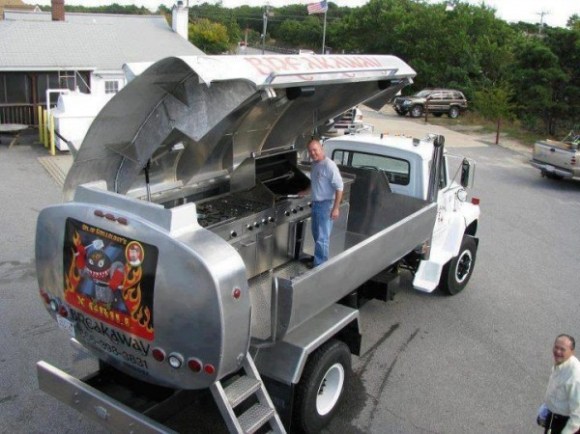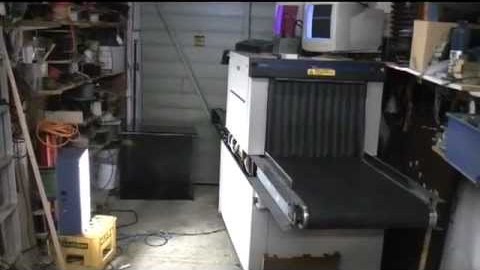
When the truck rolls up, everything seems normal enough. It’s a generic oil tanker. But when the theme from “2001: A Space Odyssey” begins to play and the side of the tank starts to open, you suddenly realize things are not what they seem. This is no mere tanker truck, it’s a massive meat cooking monster dubbed the “X Grill”.
[Ken Foster], owner and creator of this $40K+ beast, worked with welder [Gary Webb] to custom design and fabricate every component of the vehicle, from hinges to hydraulic systems. They claim not a single part came from a box. The cooking area, complete with speakers and spotlights, has storage cabinets, stainless steel prep counters, a four burner stove, and a 42 inch grill. If that’s not enough, there are three more grills you can set up beside the truck and hook into the system. All the appliances are run off a 65 gallon propane tank that’s mounted to the side of the truck.
Although the “X Grill” is available to rent for private parties, [Ken] says they spend most of their time at community and charitable events. He donates his equipment and cooking services, and the host group supplies the food and gets to keep any profit.
Good work guys!
[via Neatorama]














